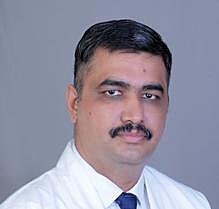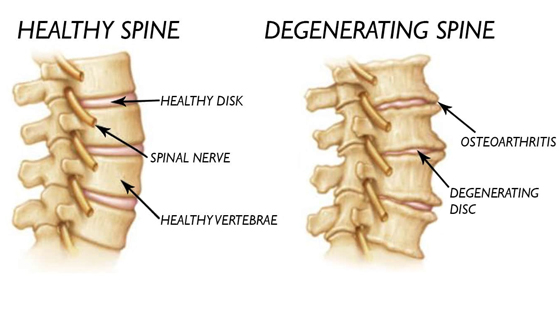
M.B.B.S., L.T.M.M.C., G.H., D.N.B. (Neurosurgery)
Since August 2015, I have been serving as a Consultant Neurosurgeon and Spine Surgeon at Indraprastha Apollo Hospitals, New Delhi. In June 2022, I transitioned to Apollo Hospitals Navi Mumbai, and in June 2024, I rejoined Indraprastha Apollo Hospitals. Additionally, I hold the position of Honorary Neurosurgeon at Tirath Ram Shah Charitable Hospitals, Delhi. In the past, I have had the honor of being associated with Yatharth Super Speciality Hospitals, Chikitsa Noida Medical Center, Apollo Hospitals Noida, and Inlaks Hospitals, Mumbai.

There’s nothing inevitable in this world but death, taxes, and…degenerative disc disease? There’s plenty you can do at any age to keep your back strong and healthy, but time marches on and good luck trying to stop that. Sooner or later, your spinal discs – the shock absorbing pads between each vertebra – start to wear out. That can lead to degenerative disc disease (DDD).
DDD is a condition in which a damaged spinal disc causes pain. (While everyone has some wear and tear of their spinal discs; not everyone will have pain.) And although it may take decades before you feel pain (if you ever do), the degeneration process can start as early as your 20s.
DDD is a common cause of back pain, especially as you get older. The discs that cushion the vertebrae – the long stack of bones in your spine – begin to dry out. Discs can also get damaged from normal wear and tear or an injury.
Both the extent of the breakdown and how it affects people varies. One person may have severe disc breakdown but only mild pain, while another may have minor disc damage and excruciating pain.
“It’s really about the individual,” says Neel Anand, MD, a professor of orthopedic surgery and director of spine trauma at Cedars-Sinai Spine Center in Los Angeles. “Some spines can bear a lot of load. Others cannot.”
To better understand DDD, it’s helpful to know a bit about the spine’s basic structures and how they work:
Your spine is divided into regions:
Age
The spine starts degenerating somewhere between the ages of 20 and 25, explains Dr. Anand. But there’s a reason you don’t see most 20-somethings wincing from back pain: it takes a long time for spinal discs to wear down on their own.
Your activity levels
Were you ever a runner, wrestler, dancer, or tennis player? Did you carry around kids or lift moving boxes? Whether that’s all in the past or part of your present, activities of daily living cause wear and tear on your spinal discs.
Injuries
Any back injury that causes swelling or soreness – from a car accident to that one wayward swing on the golf course – can increase your risk of DDD.
Spinal diseases
Certain back conditions, such as ankylosing spondylitis (an inflammatory spine condition that causes vertebrae to fuse together), can increase your risk for DDD.
Obesity or excess weight
Being overweight and obese increases the load your spine has to bear. That excess weight compresses the spinal discs. Compared with normal-weight people, those who are overweight and obese are more likely to have significant disc degeneration.
M.B.B.S., L.T.M.M.C., G.H., D.N.B (Neurosurgery)
My Neurosurgical Training in Chennai (2003-2008) involved working in the prestigious Neurosurgical unit at Voluntary Health Services Hospital. I had the honor of starting with and being the last student of Prof. B. Ramamurthi, the first Neurosurgeon of India, who established this institute after superannuation from Madras Medical College. Thereafter, I worked under Dr. Chandrashekhar Deopujari and Dr. Uday Andar at Bai Jerbai Wadia Hospital for Children, Mumbai (2009 – 2011).
Dr. Amit Kapoor
Indraprastha Apollo Hospital
Tirath Ram Shah Hospital
Happy Healing Polyclinic
Apollo Hospital, Noida
dramitkapoor@yahoo.com
+91-8448449837
©2022 Dr. Amit Kapoor, All Right Reserved.
